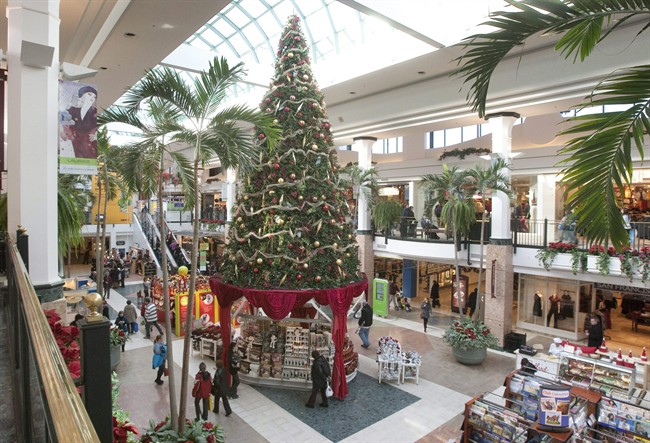TORONTO – Retailers spend millions over the holiday period — typically between Black Friday and Christmas Eve — to get consumers to open their wallets.

But those advertising campaigns are increasingly allocating more funds to target online shoppers, in addition to traditional newspaper ads, radio and television commercials and glossy catalogues.
READ MORE: 1 in 3 Canadians shopping exclusively online for holiday gifts: poll
“Retailers now have . . . many different places where they need to touch the consumer and more of the overall spend is clearly going into the digital market and less . . . is being spent on traditional marketing,” said Lori Schafer, an executive adviser at SAS Institute’s Retail Practice.
“This is why you can’t get by without analytics now,” added Schafer, noting the emergence of targeted advertising through Facebook, Google Ad Words, Instagram and Twitter.
WATCH: Online sales driving Black Friday, Christmas retail
Retail sales in Canada are expected to hit $46.8 billion in December, up five per cent from last year, according to a study released by Colliers International. That makes the holiday period “make or break” for retailers.

Get weekly money news
“It’s a highly competitive time of year,” said David Rosenberg, chief creative officer and a partner at advertising and marketing firm Bensimon Byrne. “They want to have their message available (online) and it’s basically fishing where the fish are.”
Emperuman Varadarajan first noticed the Christmas ads online in November, about the same time shopping malls began blasting out Christmas carols. Now, barely a day goes by that he doesn’t get an email about an upcoming holiday special or sale.
Varadarajan, a 27-year-old finance worker from Richmond Hill, Ont., understands why retailers need to turn up their marketing over the holidays but he finds the constant stream of holiday bargain advertising can get annoying.
“The ads help consumers like me get their shopping done early,” he said. “But after I’m done, I usually don’t pay attention to the online ads even if they only take up five seconds of my time.”
For Indigo Books & Music (TSX:IDG), holiday sales account for up to 40 per cent of the book and gift seller’s annual sales, about the same proportion of its annual marketing budget.
Retailers need ‘razor sharp focus’
Samantha Taylor, the company’s vice-president of marketing, said it’s crucial for retailers to have a “razor sharp focus” during this time to know exactly what their customers want.
Indigo is investing more in digital promotions via email, social media and search engine optimization (SEO) marketing. But it’s also staying with one of its most popular methods to reach the customer over the holiday season — its gift guides.
This year, the retailer is printing about 2.5 million holiday catalogues, up from 2.3 million last year. It’s also linking these paper catalogues to interactive campaigns so customers can flip through the books and go online for more information.
Sears is sending personalized offers to shoppers on their email distribution list and advertising one-day-only flash sales in newspapers. The national retailer knows that 40 per cent of customers who come into its stores in November and December aren’t regular Sears shoppers so they have to be enticed to come back when they’re ready to make a purchase, said spokesman Vincent Power.
Stores not only feel the pressure over how to split their marketing budget over the holidays between traditional and digital media, but they also must decide whether to invest in online campaigns that will stick with shoppers.
Last Christmas, Westjet (TSX:WJA) got an invaluable boost to its brand after it made a five-minute video documenting an elaborate holiday surprise for passengers. Travellers were asked what they wanted for Christmas as they boarded their flights, while WestJet employees scrambled to get the gifts ready and wrapped for when they landed. The video has now had more than 36 million views.
Another example of a popular viral holiday marketing campaign is the “Elf Yourself” promotion by Office Depot and Office Max in the U.S. a few years ago. People were asked to go to a website, upload their photos and have their faces superimposed onto Christmas elves they can share on social media. To date, more than 800 million images have been created.
Rosenberg said retailers take a big risk with these types of campaigns because they are expensive and the majority of them fail.
“It may feel more conservative than perhaps trying to develop an idea with the potential to perhaps go viral, but at the same time, trying to do that is a heck of a lot more costly than people think,” he said. “So it might be a more conservative use of dollars to stick to the tried and true social channels and also a smarter use of dollars.”







Comments